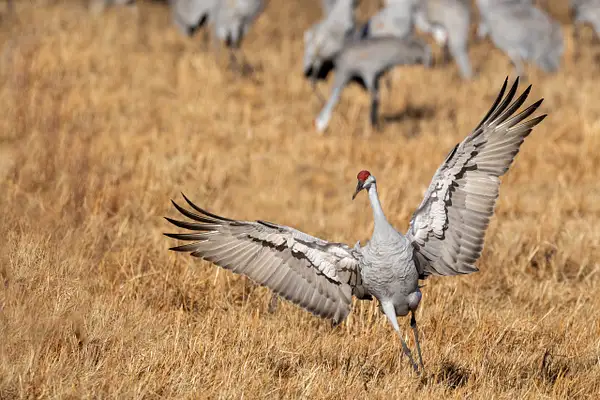- By David Pitts ;
- Jul 27, 2023
- 24 Photos

Bosque del Apache National Wildlife Refuge December 2022
Located in San Antonio, Socorro County, New Mexico, Bosque del Apache National Wildlife Refuge is one of over 560 units within the National Wildlife Refuge System. Situated between the Chupadera Mountains to the west and the San Pascual Mountains to the east, the 57,331 acre Bosque del Apache was established in 1939 to provide a critical stopover site for migrating waterfowl. The refuge is well known for the tens of thousands of cranes, geese, and ducks who winter here each year. Over 30,000 acres of Bosque del Apache are designated wilderness.
White Sands National Park is an American national park located in the state of New Mexico and completely surrounded by the White Sands Missile Range. The park covers 145,762 acres (227.8 sq mi) in the Tularosa Basin, including the southern 41% of a 275 sq field of white sand dunes composed of gypsum crystals. This gypsum dunefield is the largest of its kind on Earth with a depth of about 30 feet, dunes as tall as 60 feet, and about 4.5 billion tons of gypsum sand. White Sands National Park was originally designated White Sands National Monument on January 18, 1933 by President Herbert Hoover; it was redesignated as a national park by Congress and signed into law by President Donald Trump on December 20, 2019.
The Very Large Array (VLA) is a radio astronomy observatory located in central New Mexico on the Plains of San Agustin, between the towns of Magdalena and Datil, 50 miles west of Socorro. The VLA comprises twenty-eight 25-meter radio telescopes deployed in a Y-shaped array and all the equipment, instrumentation, and computing power to function as an interferometer. Each of the massive telescopes is mounted on double parallel railroad tracks, so the radius and density of the array can be transformed to adjust to its current task.
Since the Array is constantly changing configurations, we didn't get much of a shot. We had hoped for a good sunset or, even better, a Milky Way shot with the array making up the foreground. Unfortunately the astronomers had preference over the photographers and the arrangement was not photogenic. We did a quick day tour and then went back to Bosque for sunset.
No comments yet...
All fields are required, fill in the form.
Comment successfully added.
Comment